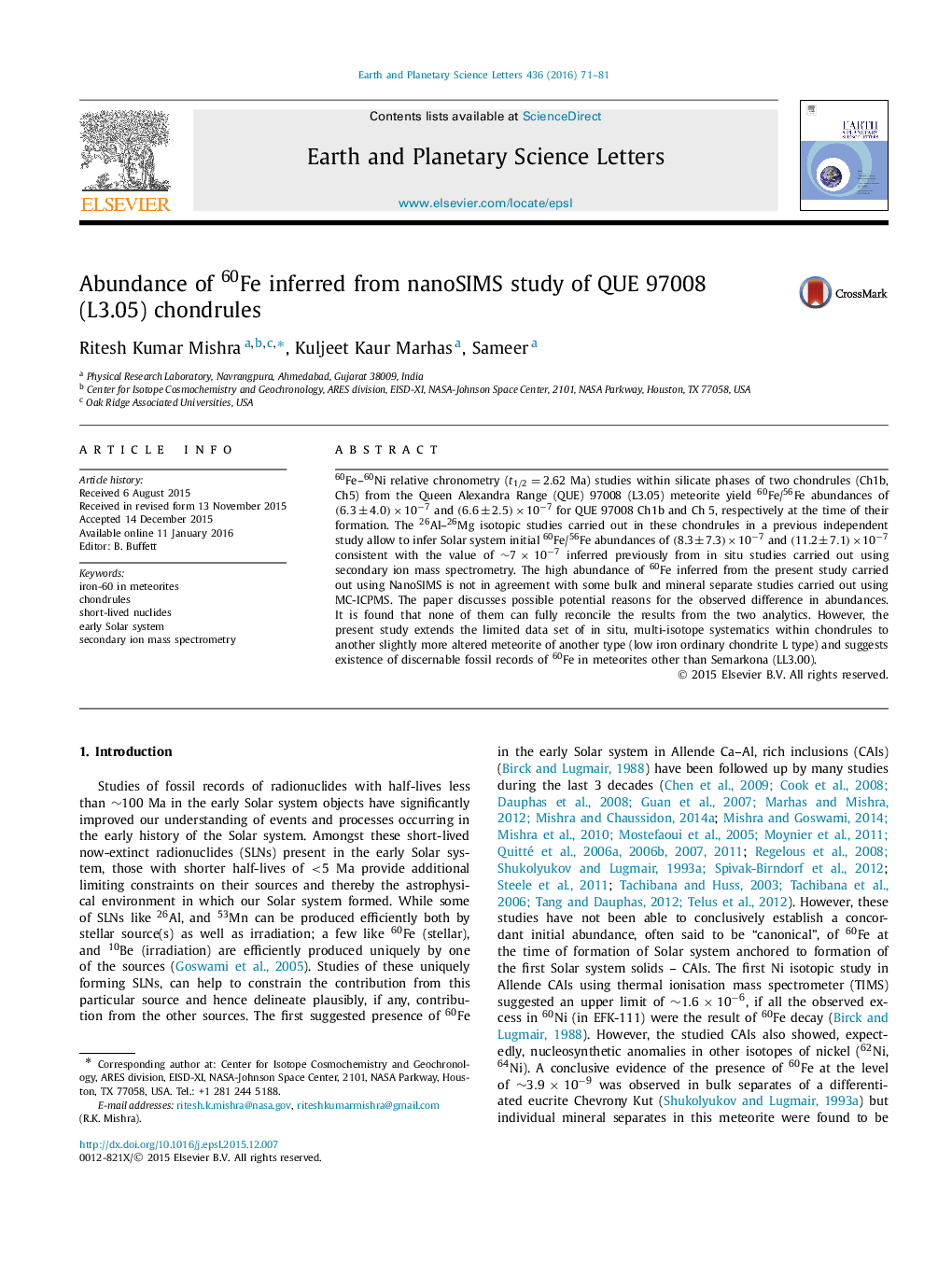| Article ID | Journal | Published Year | Pages | File Type |
|---|---|---|---|---|
| 4676953 | Earth and Planetary Science Letters | 2016 | 11 Pages |
•60Fe–60Ni systematics in 2 chondrules from QUE 97008 using nanoSIMS.•In situ studies in silicates phases give excesses in 60Ni up to ∼80‰.•60Fe/56Fe ratios (×10−7×10−7) of 6.3±4.06.3±4.0, 6.6±2.56.6±2.5 for QUE 97008 Ch1b, Ch5.•Extends data set where both systematics done to L3.1 petrographic type.•Reason for the discordance between 60Fe/56Fe from ICPMS & SIMS not found.
60Fe–60Ni relative chronometry (t1/2=2.62 Mat1/2=2.62 Ma) studies within silicate phases of two chondrules (Ch1b, Ch5) from the Queen Alexandra Range (QUE) 97008 (L3.05) meteorite yield 60Fe/56Fe abundances of (6.3±4.0)×10−7(6.3±4.0)×10−7 and (6.6±2.5)×10−7(6.6±2.5)×10−7 for QUE 97008 Ch1b and Ch 5, respectively at the time of their formation. The 26Al–26Mg isotopic studies carried out in these chondrules in a previous independent study allow to infer Solar system initial 60Fe/56Fe abundances of (8.3±7.3)×10−7(8.3±7.3)×10−7 and (11.2±7.1)×10−7(11.2±7.1)×10−7 consistent with the value of ∼7×10−7∼7×10−7 inferred previously from in situ studies carried out using secondary ion mass spectrometry. The high abundance of 60Fe inferred from the present study carried out using NanoSIMS is not in agreement with some bulk and mineral separate studies carried out using MC-ICPMS. The paper discusses possible potential reasons for the observed difference in abundances. It is found that none of them can fully reconcile the results from the two analytics. However, the present study extends the limited data set of in situ, multi-isotope systematics within chondrules to another slightly more altered meteorite of another type (low iron ordinary chondrite L type) and suggests existence of discernable fossil records of 60Fe in meteorites other than Semarkona (LL3.00).
